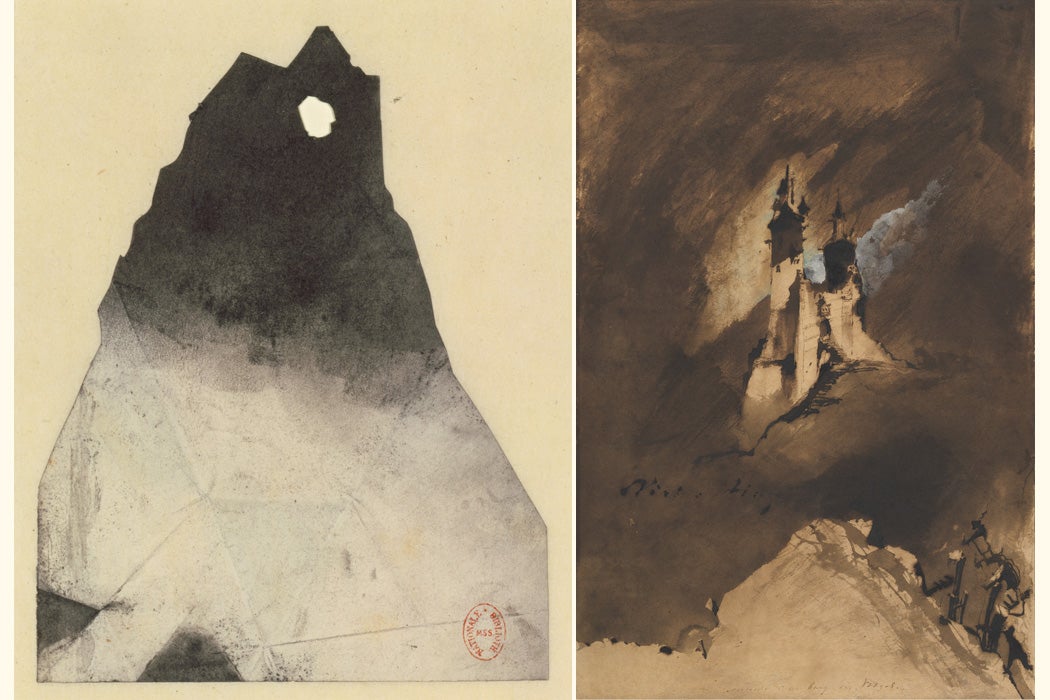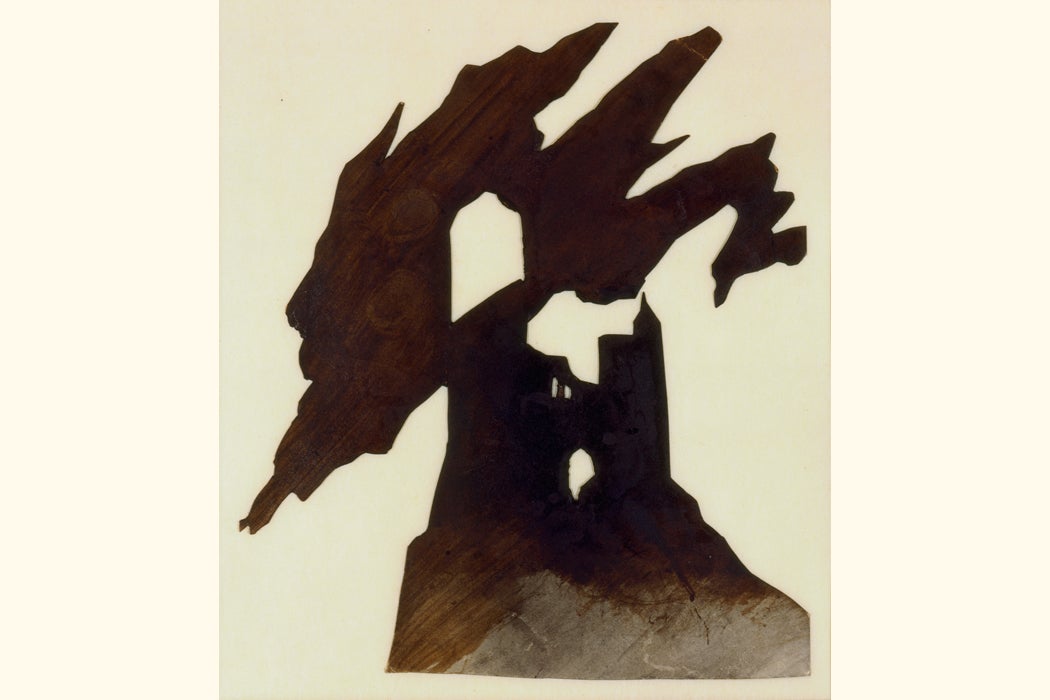French author Victor Hugo completed Les Misérables, his sprawling tome of social injustice, while in political exile on the Channel Islands of Jersey and Guernsey between 1852 and 1870. What many don’t know is that he also created hundreds of ink drawings. The 1862 book is now a classic, adapted into films and one of the most popular musicals of the twentieth century; the art remains obscure. Yet in the use of automatic drawing, and manipulations of ink blots, his artwork anticipates the avant-garde movements that followed.
The images seem to burble murkily out of the subconscious: shapes of ships tossed by waves, a hanged man suspended in a wash of tawny ink, and abstract forms accented with the author’s own fingerprints. Many were made by allowing ink to move impulsively. Even more playful caricatures used elements of chance in their creation.
“Among Hugo’s numerous, varied, and richly inventive drawings are several caricatural graphic meanderings that, in their avoidance of a preappointed image, are harbingers of the automatic drawings developed by the Surrealists,” writes art historian Aimée Brown Price in Art Journal.
Hugo used the same materials in art as in writing—ink and a quill, both its nib and feather. But unlike his elaborately structured novels, where characters’ lives intersect across years against tableaux of French history, his drawings were a place of fluid experimentation. He drew with his non-dominant hand; he splashed stencils with ink; he incorporated impressions from lace.

Art historian Mignon Nixon notes that the drawings “in which the artist manipulated chance formations of ink by tilting or folding the soaked or spattered sheets, experimented more freely with the very medium that was also the technical support for his poetic scripting.” Nixon cites Georges Hugo’s description of his grandfather at work:
He scattered the ink haphazardly, crushing the goose quill which grated and spattered trails of ink. Then he sort of kneaded the black blot which became a castle, a forest, a deep lake or a stormy sky; he delicately wet the barb of his pen with his lips and with it burst a cloud from which rain fell down onto the wet paper; or he used it to indicate precisely the mists blurring the horizon.
It’s tempting to make a direct line from Hugo’s art to the automatic drawings of the 1920s Surrealists. In reality, however, Hugo was responding to the free-flowing communication that was part of nineteenth-century Spiritualism. The author attended séances during his exile, and actively kept a diary of dreams.
“It was above all on the basis of these technical experiments that André Breton later declared Hugo one of the forerunners of surrealism,” explains art historian Stefanie Heraeus, as translated by Deborah Laurie Cohen, in History Workshop Journal. “Against the background of Hugo’s intensive involvement with dreams and his interest in séances, it seems reasonable to interpret his controlled dialogue with chance as a pictorial strategy intended to evoke unseen forces.”
Get Our Newsletter
Aside from a few appearances in print, Hugo’s art was not exhibited in his lifetime. As The Art Amateur declared in 1885, just months after Hugo’s death: “Some day or other one of Hugo’s admirers will doubtless prepare a catalogue of the master’s drawings, and then the public will be astounded to find how much he produced.”
Perhaps that moment has arrived: through December 30th, the Hammer Museum in Los Angeles is exhibiting Stones to Stains: The Drawings of Victor Hugo, the first major American exhibition of his drawings in twenty years. The exhibition includes over seventy-five works, from a lighthouse illuminating a drenching darkness of ink, to a colossal wave with the scrawled caption “Ma destinée,” and reveals a more experimental side of a literary icon.







